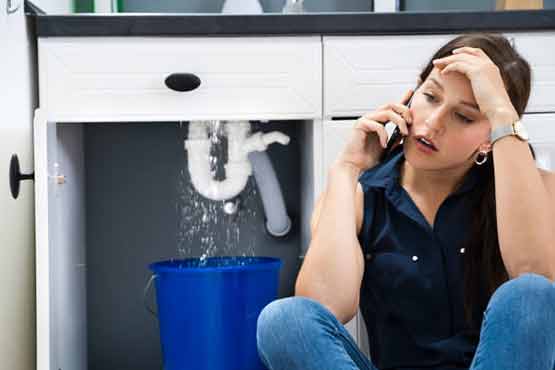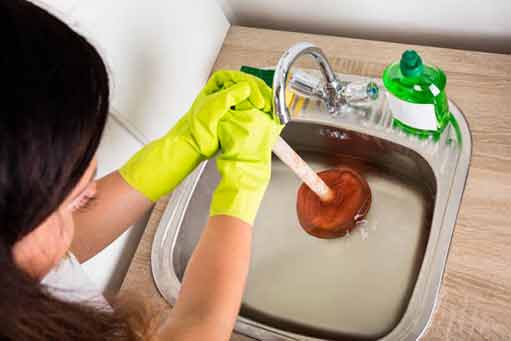
A clogged drain is one of the most frustrating plumbing problems in the home. Once a drain starts to clog, the problem never goes away. As Harper Management team explains, that is because most drain-cleaning solutions never really solve the problem; they offer a temporary fix.
To help you understand how this happens, below is a detailed explanation of how and why clogs and blockages occur in your home’s drains. The post also shows you the most effective method for fixing and preventing drain clogs in your home.
How and why do drain clogs happen?
It is almost impossible not to have clogs inside a modern drainage system. The simple reason for this is that the wastewater from the various plumbing fixtures in your home always carries some semi-solid and solid materials.
These non-liquid materials are deposited inside the pipe as water enters the system. That happens because the water current is not strong enough to wash the debris out of the line, or it could also be because the slope of the pipe is insufficient.
This buildup process starts slowly, with small amounts of debris, but with time, the rate of buildup increases until enough material has accumulated to interfere with water flow through the pipes. That can eventually lead the drains in your home to stop working.
Why drain clogs and blockages never go away?
When your drains stop working, the next step is to find a way to unclog the pipes. Some people do this with a chemical drain cleaner (an absolutely bad idea) or a DIY home remedy. You can also unclog your drain by having a plumber perform a sewer rodding of the pipes.
But regardless of which solution you use, the drain problems are almost sure to return after a short time. The reason this happens is that the drain-cleaning method you used didn’t solve the actual problem; it just provided a short-term solution.
Most of these methods focus on restoring the water flow inside your drain pipes. They do this by poking/burning a hole through the clog or simply pushing aside the debris. The rubbish inside the pipe is not removed, and with time, it causes yet another blockage.
These less-than-ideal methods for dealing with drain clogs cause homeowners more stress and waste hundreds of thousands of dollars each year. But thankfully, there is one drain-cleaning method that solves the problem.

Hydro-jetting does not just poke a hole through the blockage inside your drain lines; it will scour the sides and bottom of the drainpipes to fully dislodge any buildup.
Hydro-jetting and Why it is the perfect drain-cleaning method
Hydro-jetting is a drain-cleaning method that relies on the power of high-pressure water to clear debris from clogged drains. To clear a clogged line, water is pumped into the pipe at pressures high enough to dislodge any blockage in the system without damaging the pipes.
The typical hydro-jetting setup uses special equipment known as a “Jetter” which has the following components:
- A tank of water where the water for the operation is stored.
- A flexible metal hose is inserted into the drain that is about to be cleaned.
- A steel nozzle that comes in a range of shapes and sizes.
- A pressurizing device to increase the water pressure.
To clear a clogged drain, the hose – with the nozzle mounted on one end – is inserted into the drain line through a cleanout. The nozzle for the operation is chosen based on the size, materials and age of the pipe, as well as the kind of blockages inside the system.
A blast of high-pressure water is then sent into the pipe as the hose travels through the line. The water pressure can be as high as 3,500 pounds per square inch (psi). That is enough pressure to shear away tree roots and remove debris inside the line.
The benefits of this drain-cleaning method over other methods include:
- Thorough cleaning: Hydro-jetting does not just poke a hole through the blockage inside your drain lines; it will scour the sides and bottom of the drainpipes to fully dislodge any buildup.
- Total waste removal: In addition to dislodging clogs, hydro-jetting will wash the debris out of your drain pipes. Other drain-cleaning methods leave these materials inside the pipes, worsening problems with drain clogs for a long time.
- Hydro-jetting is safe: No harmful chemicals are used in hydro-jetting. The process uses only water or heated water. This makes it safe for the environment. Moreover, the water pressure used in hydro-jetting can be adjusted to ensure the safety of your pipes.
Finally, hydro-jetting is probably the only drain-cleaning method that can be used as an effective measure to prevent drain clogs. By hydro jetting your drains every year, you will drastically reduce the risk of drain clogs in your home and cut your overall drain maintenance costs.



